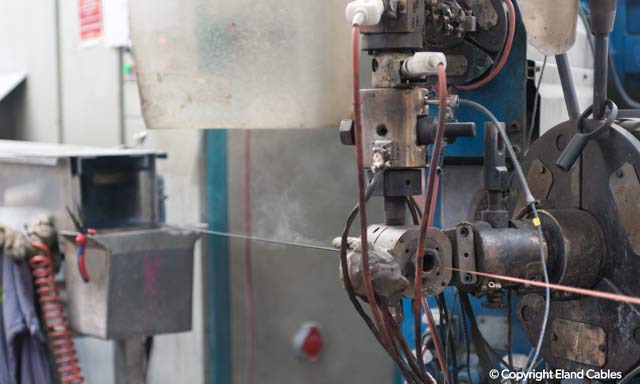What are annealed conductors?
When metal is cold worked or formed it becomes work hardened or strain hardened. Copper conductors go through a considerable amount of work hardening as the copper rod is drawn down through ever decreasing die sizes until the required conductor dimension is achieved. Copper in this state is known as hard drawn copper.

Hard drawn copper is difficult to work with and stranding and bunching of the finer wires in this state would be very difficult. By heat treating the copper at the correct temperatures the ductility can be restored to make the cable soft and flexible again. The heat treating process is known as annealing and the resulting metal is known as soft annealed copper. The degree of annealing is controlled by temperature and time, copper wire is used with different degrees of annealing depending on the application.
Hard drawn copper has significantly higher tensile strength than soft annealed copper and is used as overhead wire whereas the soft annealed copper is flexible and has somewhat improved conductivity over hard drawn copper conductor.
Annealed copper - Tensile strength 300-400 ksi (kilopound per square inch). Conductivity 100.00 % IACS
Hard drawn copper - 500-700 ksi. Conductivity 97 % IACS
People also ask
Copper and aluminium are used as the electrical conductors in electric cables due to their low resistance and excellent conductivity. These metals are both ductile and ...
Electrical conductivity and conductor resistivity are essentially the opposite of each other: Electrical conductivity is the ability of a material to conduct an electrical current...
The process begins with mining. You can find pure copper in the ground, but it is much more common to find it as an oxide and mixed with other elements.
Cable Portfolio
View our comprehensive range of power, data, control and instrumentation cables and accessories
Go